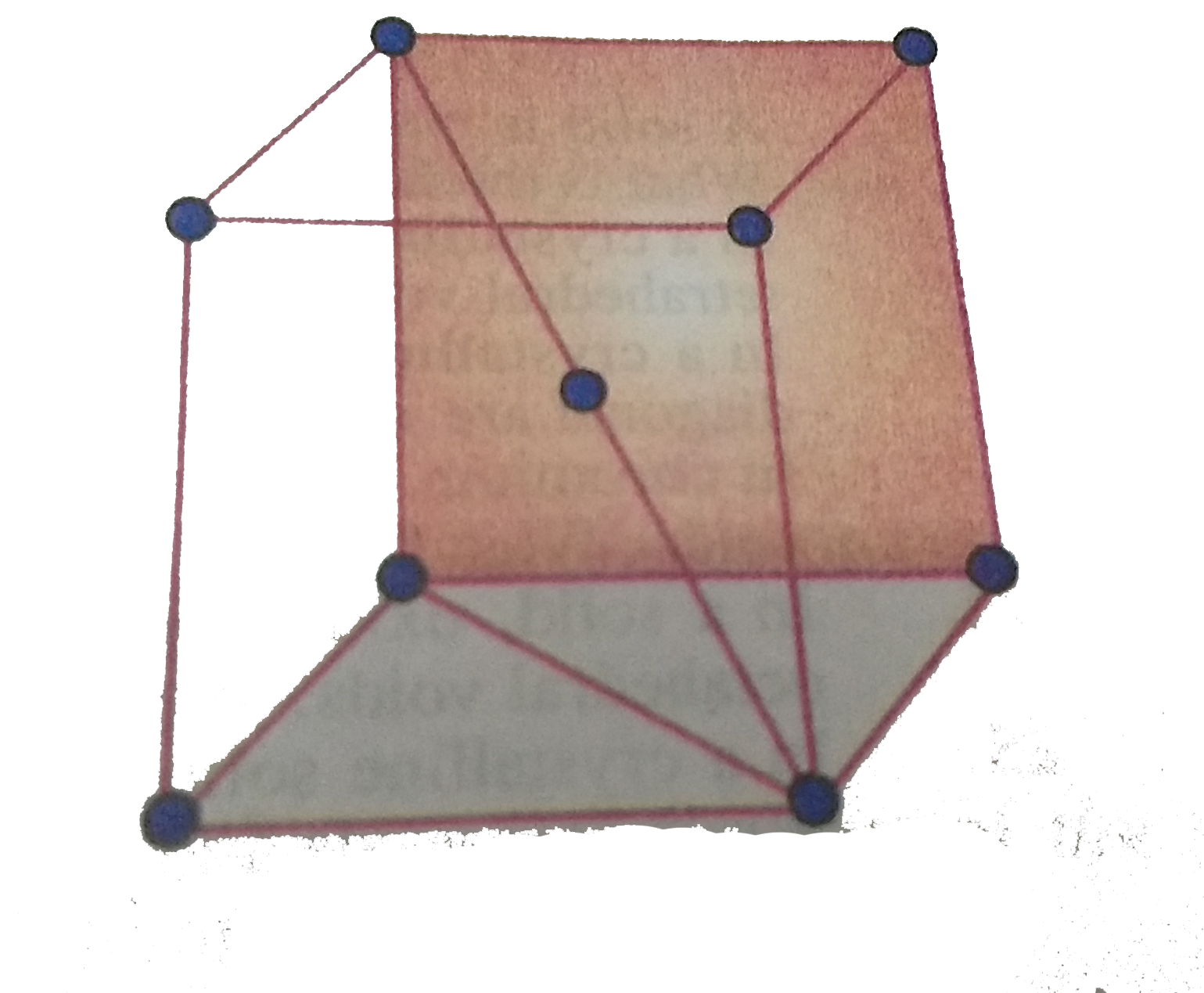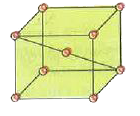The ZnS zinc blende structure is cubic. The unit cell may be described as a face-centered sulfide ion sublattice with zinc ions in the centers of alternating minicubes made by partitioning the main cube into 8 equal parts (as shown in fig)

(a) How many nearest neighbors does each Zn2+ have ?
(b) How many nearest neighbors does each S2− have?
(c) what angle is made by the line connecting any Zn2+ to any two of its nearest neighbors ?
(d) What minimum r+/r− ratio is needed to avoid anion -anion contact, if closest cation-anion pairs are assumed to touch ?
C.N. of Zn2+ & S2−=4 & 4
C.N. of Zn2+ & S2− = 6 & 6
109∘28
rZn2+rS2−=0.225
The correct Answer is:A, C, D
(a) As each Zn2+ ion is present in tetrahedral void, So it is coordination number is = 4
(b) Similarly S2− ion have coordination number = 4
(c) As Zn2+ ion is present in tetrahedral void that's why line's connecting any two nearest neighbour and Zn2+ have angle =109∘28
(d) For tetrahedral voids radius ratio is rZn2+rS2−=0.225
Topper's Solved these Questions
- SOLID STATEBOOK - RESONANCECHAPTER - SOLID STATEEXERCISE - Part-III (One or more than one option correct type)
3 Videos
- S BLOCK ELEMENTSBOOK - RESONANCECHAPTER - S BLOCK ELEMENTSEXERCISE - INORGANIC CHEMISTRY(s-Block Elements)
36 Videos
- STRUCTURAL IDENTIFICATION & PRACTICAL ORGANIC CHEMISTRYBOOK - RESONANCECHAPTER - STRUCTURAL IDENTIFICATION & PRACTICAL ORGANIC CHEMISTRYEXERCISE - Section -B
18 Videos
Similar Questions
The ZnS zinc blende structure is cubic. The unit cell may be described as a face-centered sulfide ion sublattice with zinc ions in the centers of alternating minicubes made by partitioning the main cube into 8 equal parts
(a) How many nearest neighbors does each Zn2+ have ?
(b) How many nearest neighbors does each S2− have?
(c) what angle is made by the line connecting any Zn2+ to any two of its nearest neighbors ?
(d) What minimum r+/r− ratio is needed to avoid anion -anion contact, if closest cation-anion pairs are assumed to touch ?
View SolutionIn ZnS (zinc blende) strucutre, the CN of each ion ie 4.
View Solution
Knowledge Check
In zinc blends structure the coordination number of Zn2+ ion is
A2B4C6D8
In ZnS (zinc blende) strucutre, the CN of each ion ie 4.
View SolutionHow many nearest neighbours surrounded each particle in a face-centred cubic lattice?
View SolutionPotassium crystallises in a bcc lattice as shown in figure :
(a) What is the distance the nearest neighbours ?
(b) What is the distance between the next nearest neighbours ?
(c) How many nearest neighbours does each potassium atom have ?
(d) How many next nearest neighbours does each potassium atom have ?

View SolutionPotassium crystallises in a bcc lattice as shown in figure :
(a) What is the distance the nearest neighbours ?
(b) What is the distance between the next nearest neighbours ?
(c) How many nearest neighbours does each potassium atom have ?
(d) How many next nearest neighbours does each potassium atom have ?

View SolutionPotassium crystallizes in body centered cubic lattice with a unit cell length a=5.2Å
(A) what is the distance betweenn nearest neighbourss?
(B) What is the distance between next nearest neighbour ?
(C) How many nearest neighbours does each K atom have ?
(D) How many next nearest neighbours does each K has ?
(E) What is calculated density of crystalline K
View SolutionPotassium crystallizes in body centered cubic lattice with a unit cell length a=5.2Å
(A) what is the distance betweenn nearest neighbourss?
(B) What is the distance between next nearest neighbour ?
(C) How many nearest neighbours does each K atom have ?
(D) How many next nearest neighbours does each K has ?
(E) What is calculated density of crystalline K
View SolutionAn element 'X' has bcc lattice as shown below :
The unit cell length, a is 306 pm.
(a) What is the distance between nearest neighbours?
(b) What is the distance between next nearest neighbours?
(c) How many nearest neighbours does each X atom have ?
(d) How many next nearest neighbours does each X have ?

View Solution
